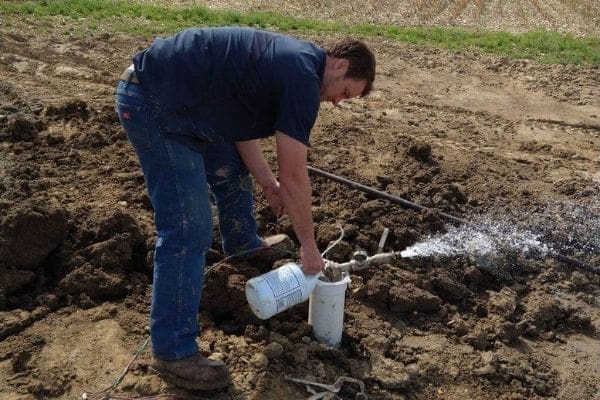How to Disinfect a Well
One of the benefits of having municipal water is that most of the time, you don’t have to worry about what’s coming out of the tap. City treatment facilities remove harmful bacteria and other substances from the water supply and constantly test drinking water to ensure it’s safe to use.
While there are numerous perks of having your own water well, the responsibility to make sure it is safe to use is up to the owner. Disinfection is an important task that every water well owner should know how to perform. For more information on the anatomy of a well, well maintenance, and treatment, feel free to contact C&J Well Co.
Why Do I Need to Disinfect My Well?
The groundwater you enjoy from your private well is not 100% pure water. It also contains things like minerals, microbes and bacteria. Most of the microscopic stuff in well water is harmless, but some of it can make the water look or taste funny, and can also make a person sick. That’s why well owners should routinely test their water and when needed, chemically treat it.

Step-by-Step Disinfection Guide
The Indiana Department of Environmental Management (IDEM) has outlined an 8-step process for a chemically disinfecting water well. You can follow this guide to treat your own well if you are comfortable doing so. If you lack experience maintaining your well, contact the experts at C&J Well Co. and we’ll be happy to assist you.
Step 1: Isolate critical areas
Make sure to avoid septic systems and bypass devices like water softeners and other components which could be damaged during disinfection. Running a high concentration of bleach water into your septic system can kill the natural bacteria. This can adversely affect the function of your septic system. Please consult a septic professional with questions.
Step 2: Electrical safety
Shut off all electrical power to the well pump, and ensure that no one accidentally turns the power back on while you are accessing the well.
Step 3: Remove well seal/cap
Once the power is off, remove the seal to your water well.
Step 4: Mixing a chlorine solution
For wells with a diameter of four inches and less than 150 feet deep, mix one gallon of chlorine bleach with three gallons of water in a clean bucket. This should be enough chlorine to disinfect the well.
For wells deeper than 100 feet and with larger diameters, use this chart provided by IDEM to determine how much chlorine bleach to use:
| Well Diameter | Multiply | Gallons/Foot |
| 4 inches | × | 0.65 |
| 5 inches | × | 1.00 |
| 6 inches | × | 1.50 |
| 8 inches | × | 2.60 |
| 10 inches | × | 4.10 |
| 12 inches | × | 6.00 |
Step 5: Adding chlorine to the well
Pour the mixture of chlorine and water into the well.
Step 6: Recirculating chlorinated water
At this point, you will want to recirculate the chlorinated water throughout the well. Place a garden hose connected to your water system into the top of the well casing, and turn the electrical power to the pump back on. Open the hose faucet and run the water for two hours once you smell chlorine in the hose.
Step 7: Bringing chlorine to each faucet
During recirculation, turn on each faucet inside your home. Smell for chlorine in the water or use test papers to confirm its presence. Once chlorine is in the water, turn the faucet off. Remove any aerators from faucets before you start this step. Don’t forget to do this for showers and outdoor faucets, too.
Step 8: Removing the chlorinated water
Leave the chlorine in your water supply overnight. The next morning, open faucets and run a garden hose into your yard to flush out the system. Don’t aim the hose water at any plants you don’t want to die, since chlorine kills plant life. Also, don’t aim the water at your septic system. Make sure all the chlorine is out of your water supply before testing for coliform. After one week and again after one month, test for coliform and repeat the process if your results are positive.
It is also a good idea to disinfect your water softener system at the same time you disinfect your well. Make sure to follow the manufacturer’s directions for disinfecting your particular system.
For more information on water well disinfection, check out IDEM’s fact sheet. You can also contact C&J Well Co. in central Indiana for all of your water well needs. We specialize in drilling, maintenance, and water treatment. Give us a call today!









